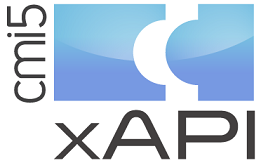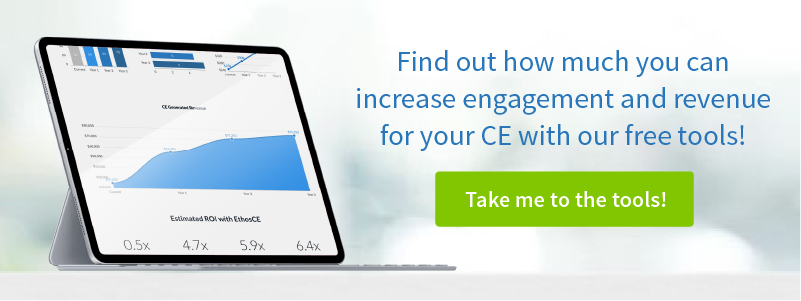Does cmi5 Matter to Continuing Education?
Continuing medical education credit tracking benefits when e-learning courses comply with technical standards. Sharable Content Object Reference Model (SCORM) ensured that content was designed in a consistent manner, so that it could be played universally — regardless of the learning management system (LMS). When the learning activity was complete, the SCORM-compliant LMS could then award continuing medical education (CME) credit. Standardization permitted users to participate in a wider variety of courses, because the content no longer relied on the LMS, and systems automatically tracked successful course completion.
 SCORM has been an effective tool since its release in 2000. However, new technology is creating dramatic changes in the LMS for CME space. An alternative standard, known as Experience API (xAPI) or Tin Can API, will permit users to get credit for a range of educational activities that historically have not been easily to create and distribute. As more e-learning vendors begin to explore the possibilities of xAPI, there will be new opportunities for instructional designers specializing in CME courses.
SCORM has been an effective tool since its release in 2000. However, new technology is creating dramatic changes in the LMS for CME space. An alternative standard, known as Experience API (xAPI) or Tin Can API, will permit users to get credit for a range of educational activities that historically have not been easily to create and distribute. As more e-learning vendors begin to explore the possibilities of xAPI, there will be new opportunities for instructional designers specializing in CME courses.
The xAPI: An Overview
The primary difference between SCORM and xAPI is the type of activities that can be tracked. While SCORM is limited to pass/fail and complete/incomplete results, along with time spent on CME, xAPI is capable of tracking any activity that qualifies for credit. The new system accepts and records statements written in simple syntax: noun-verb-object. For example, “I wrote an article on a recent case.” Since xAPI can understand these statements, it is now possible to include both formal and informal CME activities for credit.
Improving xAPI With cmi5
The biggest benefit of xAPI — its flexibility — is also the reason some find it difficult to use. The lack of built-in conditions to earn credit makes the system unwieldy. Fortunately, there is a middle ground, thanks to the introduction of cmi5. This new standard, created by the AICC (Aviation Industry Computer-Based Training Committee) in 2010 puts in place a set of rules that combines the capabilities of SCORM and xAPI, bringing a level of consistency to continuing education software and credit tracking systems. The resulting standard offers the best of both worlds, with enough structure to keep credit tracking manageable while still offering instructional designers extraordinary flexibility.

Brian Miller, Software Sherpa at Rustici Software recently wrote about cmi5. Rustici provides the “Engine” behind EthosCE’s xAPI implementation. Miller says, “The reason to love cmi5 is that all of the fundamental concepts necessary to start making robust end-to-end applications of xAPI have been codified in one succinct specification by original pioneers in the xAPI community. We’ve had four years of xAPI wandering, and now it is time for LMSs, rapid authoring tools and less traditional eLearning platforms to all find a path to success. Cmi5 can be that path.”
The Benefits of cmi5
Cmi5 promises an extensive menu of exciting features, many of which are unavailable in SCORM. For example, it is capable of tracking completion status of external course content. Other benefits include the following:
- Cmi5 courses can be taken online or offline, expanding opportunities for students to participate — even when there is no internet connection. Progress is saved and submitted to the LMS when the device is back online.
- Courses can require — and students can submit — demonstrations of learning in a variety of formats. Some of these include audio and video recordings.
- CME credit can now be awarded for the many learning activities that occur outside of formal instructor-led courses. Cmi5 capabilities allow tracking of simulations, gaming and social learning, to name a few.
- Cmi5 specifications are far simpler than SCORM, and the application runs as an add-on to xAPI. Implementing cmi5 on top of xAPI requires very little technical knowledge.
- It’s the little things that cause the most frustration, and SCORM’s use of pop-up windows means an endless battle for students and instructors. Because many browsers have pop-up blockers — and they don’t work reliably on mobile devices at all — many students struggle to launch SCORM courses. This problem is solved with cmi5.
Though cmi5 is still in its infancy, it is expected to rise rapidly to become the gold standard in packaging CME e-learning content. By combining the best parts of SCORM with the remarkable benefits of xAPI, cmi5 promises to simplify the development and management of continuing education content and tracking for instructors and students.
Learn more about SCORM, xAPI, and cmi5 with EthosCE. EthosCE is the industry-leading, SCORM-compliant learning management system designed to automate and modernize the delivery of continuing education in the health professions. We work closely with leading medical association, academic centers, and health system to optimize their technology infrastructure and create an easy-to-use and intuitive environment for learners and CME administrators alike. For more information about EthosCE, please contact us at 267-234-7401.
 We're now part of the Cadmium product suite! Learn more
We're now part of the Cadmium product suite! Learn more 

